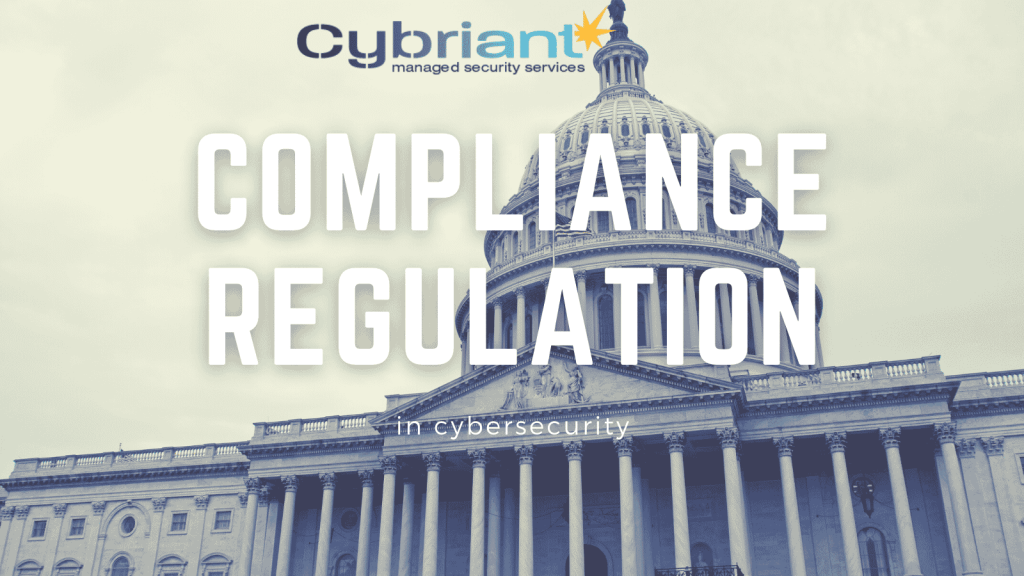Compliance regulation is a necessary evil in the world of cybersecurity. As a CISO, you need to be aware of all compliance regulations that affect your organization so that you can ensure your security program meets these requirements while also protecting sensitive data.
Failing to do so could result in penalties and fines for your organization, not to mention damage to your reputation. In this blog post, we’ll discuss some of the most important compliance regulations affecting cybersecurity and how CISOs can ensure their organizations are compliant.
The Need for Compliance Regulation in Cybersecurity

In today’s digital age, safeguarding sensitive data is more important than ever before. Businesses of all sizes are increasingly reliant on electronic data, and a breach of security can have serious consequences. That’s why businesses need to have robust cybersecurity measures in place.
By setting out clear guidelines and standards, compliance regulations help to create a level playing field and give businesses the confidence that their data is safe. In an increasingly interconnected world, compliance regulation is an essential part of keeping businesses and consumers safe from the growing threat of cybercrime.
Cybersecurity regulatory compliance is adhering to the rules and regulations put in place by a governing body to protect electronic information and communication systems.
A CISO mandate is a directive from a company’s CEO or other senior executive that requires the CISO to implement specific security measures. The mandate usually defines the parameters within which the CISO must operate, such as ensuring that a certain percentage of the budget is allocated to security, setting specific security goals, and specifying which systems and data are to be protected.
Why CISOs Should Care About Compliance Regulation
As a CISO, you need to be aware of all compliance regulations that affect your organization. This includes the CMMC, which is expected to become mandatory for all DoD contractors shortly. Failing to comply with the CMMC could result in your organization being ineligible to bid on certain types of contracts.
In addition to the CMMC, there are several other compliance regulations that CISOs should be aware of. These include the EU General Data Protection Regulation (GDPR), the California Consumer Privacy Act (CCPA), and the Gramm-Leach-Bliley Act (GLBA).
Each of these compliance regulations has different requirements, but they all share one common goal: to protect the data of businesses and consumers.
As a CISO, you need to ensure that your organization is compliant with all relevant compliance regulations. This includes ensuring that your security measures meet the requirements of these regulations.
By taking the necessary steps to comply with compliance regulations, you can help to protect your organization from the costly consequences of a data breach.
Related: The CEO’s Guide to Penetration Testing
How to Ensure Your Organization is Compliant

There are several steps that CISOs can take to ensure their organization is compliant with relevant compliance regulations.
First, you need to be aware of all compliance regulations and compliance obligations that apply to your organization. This includes keeping up to date with changes to these regulations.
Second, you need to ensure that your security measures meet the requirements of these regulations. This may require implementing new security measures or updating existing ones.
Third, you need to create a compliance plan. This plan should detail how your organization will comply with relevant compliance regulations.
Fourth, you need to monitor your organization’s compliance. This includes regular audits and reviews.
Finally, you need to take action if your organization is not compliant. This may include implementing corrective measures or disciplinary action.
By taking these steps, you can help to ensure that your organization is compliant with all relevant compliance regulations.
How CISOs can ensure that their cybersecurity solutions are compliant with regulations
The first step is to ensure that your cybersecurity solutions are compliant with all relevant compliance regulations. This includes keeping up to date with changes to these regulations.
Second, you need to ensure that your security measures meet the requirements of these regulations. This may require implementing new security measures or updating existing ones.
Third, you need to create a compliance plan. This plan should detail how your organization will comply with relevant compliance regulations.
Fourth, you need to monitor your organization’s compliance. This includes regular audits and reviews.
Finally, you need to take action if your organization is not compliant. This may include implementing corrective measures or disciplinary action.
By taking these steps, you can help to ensure that your organization is compliant with all relevant compliance regulations.
What are the Benefits of Regulatory Compliance?

Compliance can have several benefits for organizations. These benefits include:
Reduced risk of data breaches
By complying with data security regulations, organizations can help to protect themselves from the costly consequences of a data breach.
Improved security
Compliance with relevant regulations can help to improve an organization’s security posture. This is because compliance often requires the implementation of strong security measures.
Greater customer trust
Organizations that are compliant with relevant regulations often enjoy greater customer trust. This is because customers know that their data is being protected by the law.
Increased efficiency
A compliance program can help to increase the efficiency of an organization. This is because compliance often requires the implementation of streamlined processes and procedures.
Improved reputation
Organizations that are compliant with relevant regulations often enjoy a better reputation. This is because compliance demonstrates a commitment to data security and privacy.
Compliance can provide several benefits for organizations. These benefits include reduced risk of data breaches, improved security, greater customer trust, increased efficiency, and improved reputation.
What is Compliance-Based Security?
Compliance-based security is a security approach that focuses on meeting compliance requirements. This approach typically involves implementing security controls that are mandated by compliance regulations.
The advantage of this approach is that it can help organizations to avoid penalties for non-compliance. However, the disadvantage is that it does not always address the root cause of security issues.
Organizations should carefully consider their security needs before deciding whether or not to adopt a compliance-based approach.
What is the Difference Between Compliance and Security?
The main difference between compliance and security is that compliance focuses on meeting regulatory requirements, while security focuses on protecting data from unauthorized access. Compliance typically involves implementing security controls that are mandated by regulations. Security, on the other hand, typically involves implementing best practices for data security.
Tips for Staying Ahead of the Curve in Terms of Compliance Regulations in Cybersecurity

Staying ahead of the curve in terms of compliance regulations can be a challenge for any organization, but it is especially important in the cybersecurity field.
One way to stay on top of compliance regulations is to outsource managed security services. This can help to ensure that your organization has the most up-to-date security procedures and policies in place.
Additionally, log monitoring can be a valuable tool for spotting potential compliance issues. By keeping an eye on your organization’s logs, you can identify unusual activity that might indicate a problem.
Finally, it is important to have a solid incident response plan in place in case of a breach. By taking these steps, you can help to ensure that your organization is prepared for whatever comes your way.
Does Compliance Equal Security?
No, compliance does not necessarily equal security. Compliance is a necessary but not sufficient condition for security. In other words, an organization can be compliant with all relevant regulations but still be vulnerable to attack.
For example, an organization might have strong security measures in place but still be vulnerable to a sophisticated cyberattack. Therefore, organizations need to focus on both compliance and security.
Organizations should focus on both compliance and security to protect themselves from cyberattacks. Compliance is a necessary but not sufficient condition for security. Therefore, organizations should focus on both compliance and security.
What are the Most Important Compliance Regulations for Cybersecurity?
Several different compliance regulations are relevant to cybersecurity. Some of the most important compliance regulations include:
–The General Data Protection Regulation (GDPR): The GDPR is a set of regulations that govern how organizations must handle personal data.
–The Health Insurance Portability and Accountability Act (HIPAA): The HIPAA is a set of regulations that govern how organizations must handle protected health information. HIPAA regulations are relevant to cybersecurity because they dictate how sensitive information must be protected.
–The Payment Card Industry Data Security Standard (PCI DSS): The PCI DSS is a set of regulations that govern how organizations must handle credit card data. PCI DSS regulations are relevant to cybersecurity because they dictate how sensitive information must be protected.
–The Sarbanes Oxley Act (SOX): The SOX is a set of regulations that govern how publicly traded companies must handle financial information.
What is CMMC?
The CMMC is a set of cybersecurity standards that aim to improve the overall security posture of DoD contractors. The CMMC spans five maturity levels, with Level 1 being the most basic and Level 5 being the most advanced. DoD contractors are required to be certified at a certain CMMC level to bid on certain types of contracts.
While the CMMC is not yet mandatory for all DoD contracts, it is expected that this will change shortly. As such, contractors need to start preparing for CMMC certification now. There are several steps that contractors can take to improve their cybersecurity posture and begin the CMMC certification process.
These steps include conducting a cybersecurity self-assessment, implementing basic cybersecurity measures, and developing a cybersecurity plan.
By taking these steps, contractors can ensure that they are prepared for CMMC certification and can bid on a wider range of contracts.
How can a Managed Security Services Provider help with Regulatory Compliance Management?
Organizations today must comply with an ever-growing number of regulations, such as GDPR, HIPAA, and PCI DSS. Complying with these regulations can be a daunting task, as it requires organizations to have comprehensive security controls in place.
A Managed Security Services Provider (MSSP) like Cybriant can help with this by providing log monitoring, intrusion detection, and penetration testing services. Log monitoring can help to identify potential compliance issues, and penetration testing can identify weaknesses in an organization’s security controls. Cybriant recommends the NIST cybersecurity framework to help build a solid security foundation.
By working with an MSSP, organizations can ensure that they have the necessary security controls in place to comply with industry regulations.
Corporate Compliance Regulation

Corporate compliance is the process of ensuring that an organization is compliant with all relevant regulations.
It is a complex and ever-changing area, and companies must dedicate significant resources to stay up-to-date with the latest compliance requirements.
Failure to comply with the law can result in significant financial penalties, damage to reputation, and even jail time for company executives. While compliance efforts can be costly, they are essential to protecting a company from legal liabilities.
A comprehensive compliance program should include security risk assessment, penetration testing, and regular training for employees on the latest compliance requirements. By taking these steps, companies can minimize the risk of non-compliance and ensure that they are operating within the bounds of the law.
Security Risk Assessment/Penetration Testing
A security risk assessment is a first and most important step in ensuring corporate compliance. This process involves identifying potential security risks and assessing their impact on the business. Once security risks have been identified, it is important to implement security controls to mitigate these risks.
One of the most effective security controls is penetration testing. Penetration testing simulates real-world attacks and can help to identify vulnerabilities in systems and controls. By conducting regular security risk assessments and penetration tests, businesses can greatly reduce their security risks and ensure compliance with regulations.
Network Security Compliance Requirements
Network security compliance requirements seek to ensure that organizations are using best practices and strategies when it comes to protecting their systems and data. These requirements can range from basic policies such as data access control, firewall configuration, and encryption usage, to more complex activities such as penetration testing or continuous monitoring. Organizations must adhere to these requirements in order to maintain safe and secure networks and protect their data from malicious actors.
Network security compliance requirements may also require organizations to implement regular training for employees on proper network security practices, as well as provide evidence that these practices are being followed. This helps to ensure that employees understand the risks associated with using company networks and how to properly protect them. Additionally, many organizations must adhere to industry compliance standards, such as HIPAA and PCI DSS, which provide specific requirements related to data security.
Overall, network security compliance requirements help protect organizations from online threats by ensuring that they are using best practices when it comes to protecting their systems and data. It is important for organizations to understand the various requirements and create policies and procedures that adhere to these regulations in order to keep their networks safe and secure.
Network Security Laws and Compliance
Compliance with applicable laws is also an important part of network security. Organizations may have specific requirements from local or federal laws that they must adhere to in order to protect their systems and data. For example, the European Union’s General Data Protection Regulation (GDPR) requires organizations to put certain protections in place to ensure personal data is secure. Organizations must also ensure that they are compliant with the Payment Card Industry Data Security Standard (PCI DSS) if they store, process, or transmit credit card information.
Organizations should also understand their legal obligations when it comes to responding to a data breach or security incident. Depending on the jurisdiction and industry, organizations may be required to notify affected individuals and/or the relevant regulatory body if a breach has occurred. Knowing these requirements ahead of time can help organizations quickly respond to a breach and ensure that all legal obligations are met.
Overall, it is important for organizations to understand the various laws and regulations related to network security compliance in order to protect their systems and data. Adhering to applicable legal requirements, industry standards, and best practices when it comes to network security is essential in ensuring a safe and secure environment for all users.
Conclusion
Ensuring your company complies with all applicable regulations can be a daunting task. However, it’s essential for protecting your business and its employees. A security risk assessment can help you identify any potential vulnerabilities and take steps to mitigate them.
Managed Security Services can provide the expertise and support you need to stay compliant and secure. Contact us today to learn more about how we can help you protect your business.
Protect Your Business with Cybriant’s IT Security Best Practices Checklist
Protect Your Business with Cybriant’s IT Security Best Practices Checklist



